Online MPH Students Tackle Real COVID-19 Issues in the Virtual Classroom
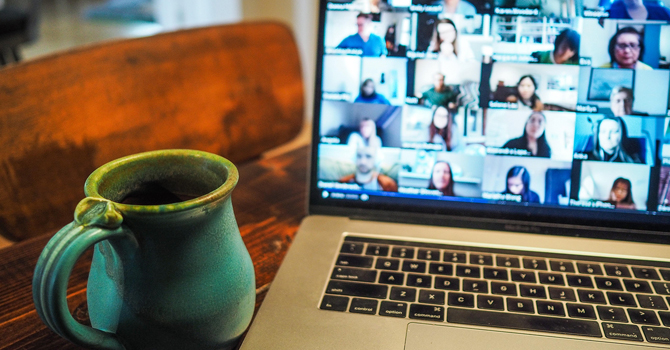
MPH Students Reflect on COVID-19 Simulation Coursework
Online MPH - Second Year Students
As the coronavirus pandemic swept across the nation, University of Michigan School of Public Health online master’s students in Population and Health Sciences had the unique opportunity to use what they’ve learned through coursework in a real-world public health simulation focused on controlling the coronavirus pandemic.
Sharon Kardia, associate dean for education, professor of Epidemiology, and faculty lead for the online master’s program, used the unprecedented situation to demonstrate to students in her Population Health 515 course what public health professionals do in a real global crisis. The course project allowed students to explore the impact of the pandemic from a multitude of perspectives, including epidemiological, economic, through policy, from a provider perspective, and more. Utilizing the real studies and information being reported in real-time, students were able to get direct insight into the work of public health professionals handling the current pandemic.
A few of these second year Master of Public Health students reflect on their experience below.
Karl Berkemeier
Project: Successful population-level mitigation: Strategies used in Asia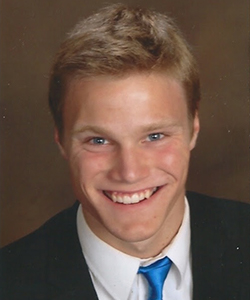
My portion of the project specifically was looking at what could be learned from the examples of Asian countries. The day I submitted my final presentation there were data published that morning that I included in the presentation. And I knew that the next day there would be even more, it really was a day-by-day, even hour-by-hour learning process. Even though data and news were so fast breaking and constant, it felt almost like a retrospective looking at the rapid responses of countries like Taiwan. I also think with something like a global pandemic, an international lens is so necessary, because once it reaches this point, collaboration and data sharing are absolutely crucial.
Maelyn Bremer
Project: 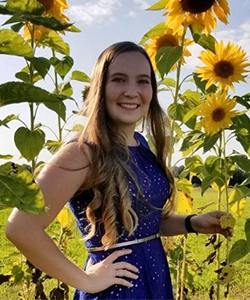 Benefits to Serological Testing
Benefits to Serological Testing
This project provided a great opportunity to experience what a professional already in the field might be doing in response to a public health issue and to do research to further inform myself on the virus.
I chose to focus on serological testing, which is a test that uses a nasal swab or a small amount of blood, plasma, or saliva to test an individual for antibodies of the SARS-CoV-2 virus, which causes COVID-19. I started my research by looking into the different types of antibody testing available for viruses, and then narrowed my search to the efficacies of COVID-19 antibody tests and to the approved tests in the United States by the FDA. This project simulation opened my eyes to the various paths that a career in public health and population health can take you.
It helped me begin to experience the important ties that link my interest in scientific research, on the micro and molecular scale, to doing the greater good and making a difference for population health.
Nathan Clayton
Project: 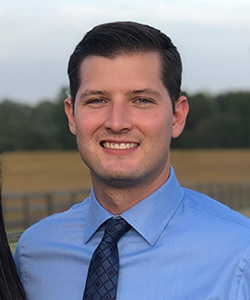 "Is college football possible in 2020?"
"Is college football possible in 2020?"
When you think of college football, you don’t think of public health. This experience has shown me just how much the policy decisions we make have greater reach than I previously recognized.
Michigan is home to multiple major Power 5 college football programs so there has been a lot of hand-wringing over whether or not the season will take place. A lot of my research focused on economic impacts for previous college football seasons in order to gauge the financial burden that would be placed on universities and communities that no longer had the sport to lean on.
I looked at the actions that programs were already taking towards adapting to the ‘new normal.’ What policies were being instituted to protect the student-athletes? What were administrations doing to protect fans should they be allowed to attend?
This project helped me refine my quantitative research skills. Particularly, it helped distill information on a large scale to help make effective, data-driven decisions related to collegiate athletics.
Read more about Nathan’s experiences as an online MPH student.
Christopher Crowe
Project: 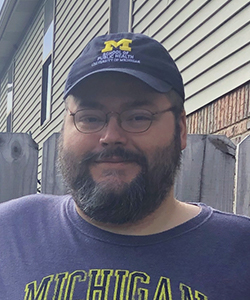 The utility of an adaptive triggering model to viral containment
The utility of an adaptive triggering model to viral containment
There is a large push to reopen everything from large factories to local gyms from certain segments of society. Many people [have also been] put in bad economic situations that may result in public health issues. Adaptive triggering may be a way to allow a balance to be found between two simultaneous disasters—one economic and one that directly costs lives but is likely impossible to stop without a vaccine.
The project was an opportunity to help address a major event that was happening around the country and around the world in real time. It is a new virus and no one has immunity to it. Information about it is sparse. The project was a great experience that reflected some of what currently practicing public health experts were doing both at that time and currently.
My previous coursework definitely helped me ‘speak the language’ of public health when looking at research. I had been exposed to the basics of epidemiology, biostatistics, and environmental factors, and the social determinants of health before conducting this research. That base of knowledge was a great help in selecting research that I hoped would balance the human, social, and economic impacts of the pandemic without worsening the crisis or doing more harm than good to public health.
Hanady Daas
Project: 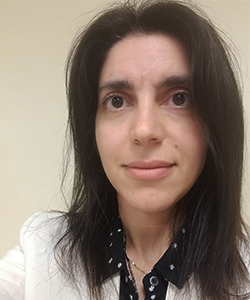 Next phase of COVID-19: Resuming economic life and the role of antivirals
Next phase of COVID-19: Resuming economic life and the role of antivirals
Despite being one of the most challenging times of my life, this was a huge learning experience for me. As an infectious disease physician, I worked with other physicians in my institution to divide work and stay informed. Interdepartmental communication between physicians, nursing, pharmacy, respiratory therapy and other departments was of utmost importance to ensure proper collaboration and organized workflow. When I came to my course study at night, it was the time I put all this into the simulation project. Learning from all that was happening around me, I could see how the framework of population health was both necessary and logical in order to reach a solution that is effective and sustainable.
Oftentimes, physicians view public health projects as beyond their scope and more of a specialized area that does not apply to their daily work. I [saw] through this collaborative project how the concepts of public health can be used in every field to build more effective teams that can accomplish more by taking into account all the stakeholders and the communities when setting up new services or dealing with outbreak situations such as COVID-19.
Max Guiterrez
Project: 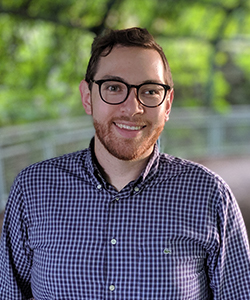 Next phase of COVID-19: Estimating the economic impact of 'Stay Home, Stay Safe'
Next phase of COVID-19: Estimating the economic impact of 'Stay Home, Stay Safe'
I have a background in finance and consumer behavior, and I wanted to use that knowledge and experience in a public health setting. I focused my project on building out an understanding of the systems and consumer behavior factors that contribute to and help explain the potential economic impacts of COVID-19 in both the short and long-term. Because I came to the project familiar with some of the concepts, techniques, and data sources available, I was able to focus on building out a logic model to the problem of returning to normal economic activities in Michigan.
We’ve seen an increase in businesses asking workers or patrons to screen their vitals before entering the building. However, we’re seeing real cultural differences in how people perceive the risk of COVID-19 that has accelerated their ceasing of aversion behaviors.
Working on this project solidified my desire to work on short- and long-sighted policy issues to address some of the structural inequities that have resulted in unequal distribution of disease during the COVID-19 pandemic.
This simulation class was like an invitation into ‘the room where it happens’ and was a great experience-based learning opportunity to deal with a problem with limited information and an evolving landscape. It was a good reminder that we’re not always going to have the exact answers but that we can make good approximations that are grounded in theory with emerging data.
Adam Kollipara
Project: 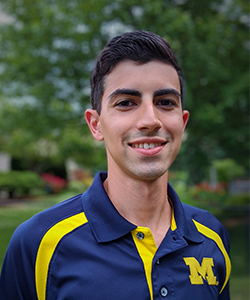 Routes and probability of direct and indirect transmission of COVID-19: Impact on
the economy and going back to work
Routes and probability of direct and indirect transmission of COVID-19: Impact on
the economy and going back to work
It was very interesting to do this type of project in a real-time health crisis because there is so much information that is changing on a daily—or even hourly—basis due to constant research. It gave insight as to how public health officials perform research and inform the general public about emerging public health issues that have not been experienced before in our lifetime, especially with the technology and testing that we have access to nowadays for prevention and treatment.
I looked at the differences in how individuals and industries implement strategies to reduce transmission, as well as the impact of COVID-19 on the economy and returning to work. I then curated recommendations for how daily life and work life will be different in the foreseeable future and how to protect occupational safety. It was a pretty unique learning situation because I was able to bring together aspects of all six core disciplines of public health.
We collaborated and corroborated with fellow classmates and Dr. Kardia during intellectual conversations in our population health Zoom classes. This was really insightful because our online cohort is scattered across the US and has so many different perspectives as my classmates work in a vast array of professions in public health. I work in cancer research with the University of Michigan, so it’s enlightening to hear [others] elaborate from other viewpoints that I haven’t considered before.
Anastasia Lesage
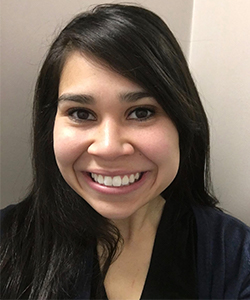 Project: Testing and returning to work
Project: Testing and returning to work
It was very interesting to focus on COVID-19 testing during this simulation project in the midst of a real-time public health crisis. I was learning things about testing and the virus while researchers and public health professionals were doing the same thing. The biggest benefit of this simulation in a course setting was the fact that we were able to discuss questions about the pandemic with Dr. Kardia and gain her insight. The course-setting allowed discussion with my classmates that helped me understand things from their perspective and understanding.
Madeline McDonnell
Project: 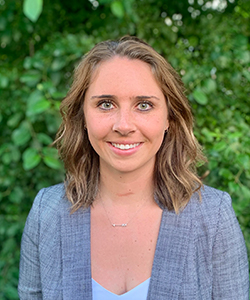 The effects of social distancing on viral transmission: COVID-19
The effects of social distancing on viral transmission: COVID-19
The opportunity to study a pandemic as a healthcare professional and a public health student in real-time was a once-in-a-lifetime experience.
I chose to study the effects of social distancing on viral transmission because I was fascinated by the concept that having to abandon our natural human instincts to touch, to hug, to shake hands would be an effective method of directly affecting the transmission.
I researched information available on the CDC and WHO websites, as well information provided by the healthcare institution I work for. As a nurse I believe in being a caregiver as well as an educator, so while carrying out my research, my goal was to emphasize the use of reliable public resources. Making sure that resources are accessible to others is imperative if we hope to cultivate an atmosphere of trust [in public health].
Kwame McGlory
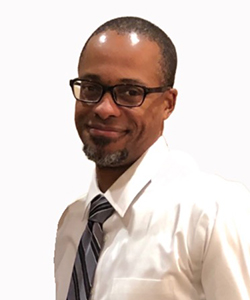 Project: Michigan's healthcare capacity to handle the estimated cases
Project: Michigan's healthcare capacity to handle the estimated cases
My project focus was to evaluate Michigan’s healthcare capacity to handle estimated cases. I chose this topic because I am a registered nurse in a burn intensive care unit and I had several current and former coworkers that answered the call to help out in New York City during the height of the crisis there.
Everyone knew that ventilators and PPE were in short supply, but I was hearing [from these colleagues] that everyday supplies were running out, like primary tubing to administer IV medications, needles, syringes, and a plethora of medications needed in an ICU setting.
I thought being able to give voice to their stories in real-time was important because there were many things that were just as crucial to providing adequate care for these sick patients that local, state, and the federal government were not focusing on.
Christopher Rudski
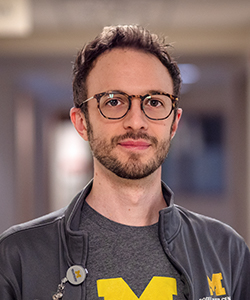 Project: Estimating risk of return to work in Michigan upon reopening the economy and loosening
shelter-in-place orders
Project: Estimating risk of return to work in Michigan upon reopening the economy and loosening
shelter-in-place orders
We had the opportunity to discuss how University of Michigan School of Public Health [experts] were providing modeling and expertise to leaders in the state of Michigan during the start of the pandemic. While learning about their strategies and challenges, my classmates and I got to share our research with Dr. Kardia, prepare a presentation, and present our findings as if we were briefing the governor of Michigan.
I was impressed with the research and innovative solutions that my cohort produced.
This simulation really opened my eyes to how vital the voice of public health professionals is to the health of communities on a state and local level, especially during a pandemic. Moving forward, as we begin to rebuild communities and public infrastructure, public health needs to play a major role and be ready to engage populations and leaders to promote health and build policies that address disparities revealed by COVID-19.”
Read more about Chris’ experiences as an online MPH student.
- Interested in online master's programs? Learn more today.
- Read more articles by Michigan Public Health students, faculty, staff, and alumni.
- Support research at Michigan Public Health.
